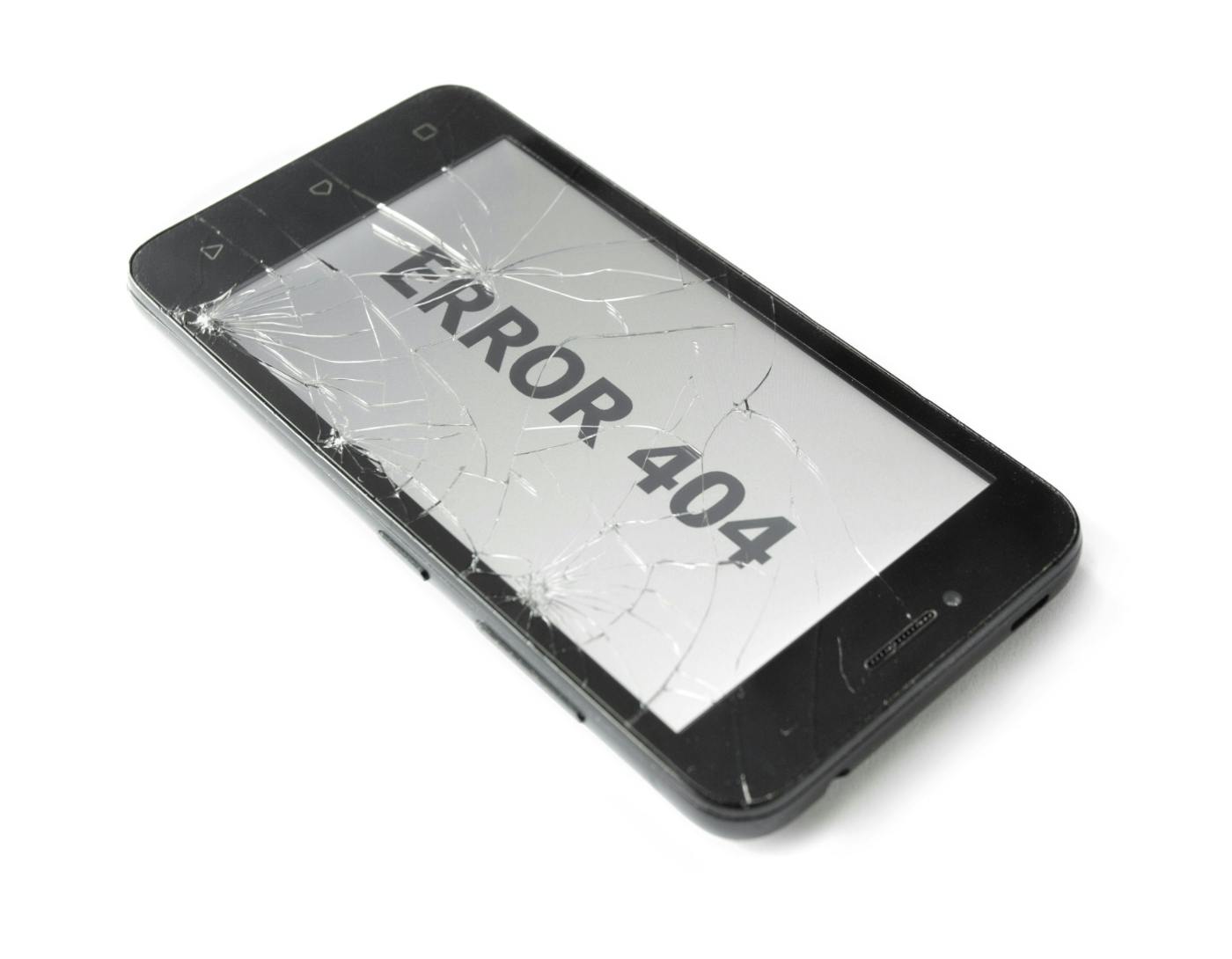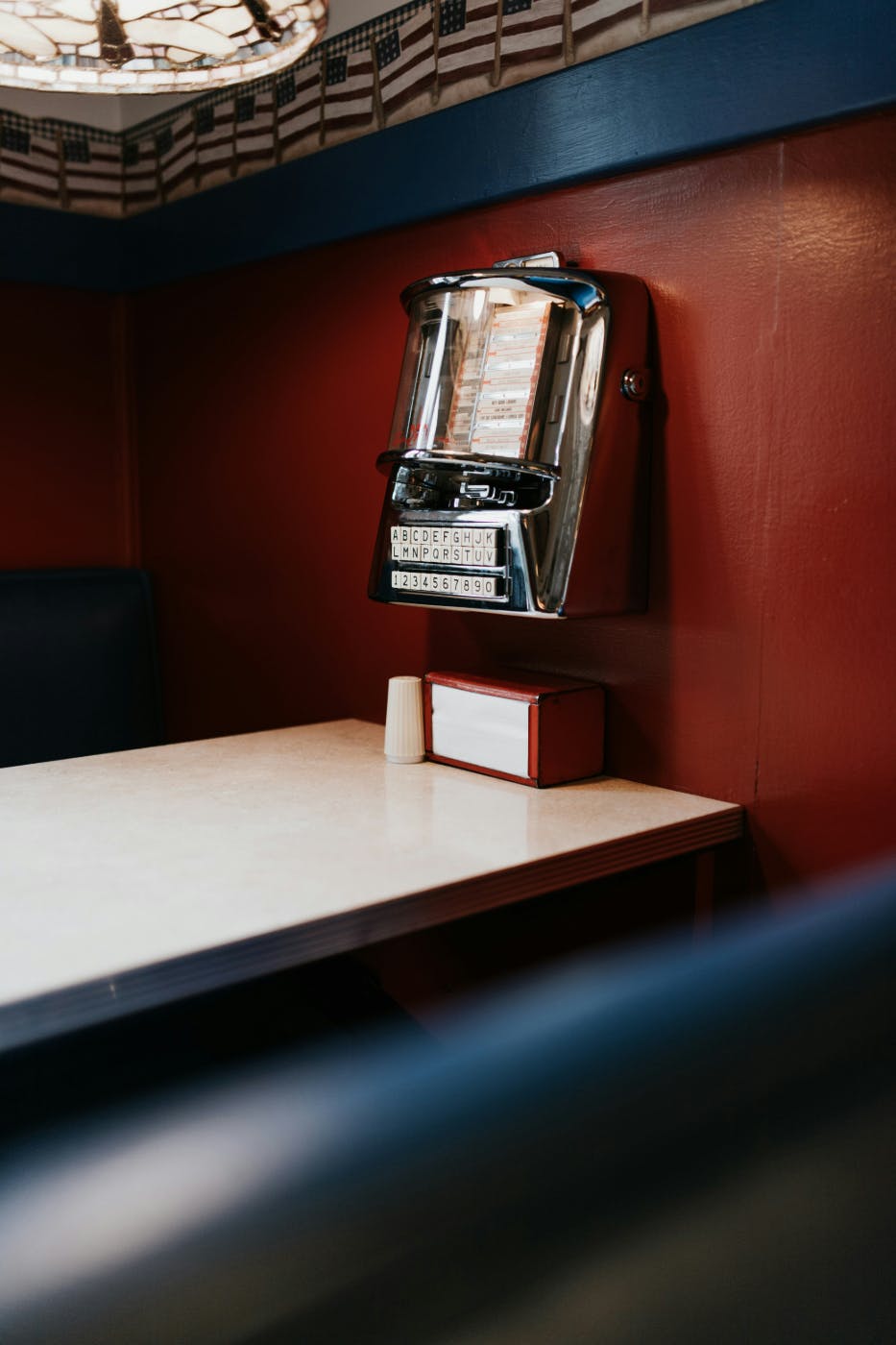

There are moments when a brand’s identity becomes so outdated, tarnished, or disconnected from its audience that the only option is to burn it all down and start fresh.
I’m a homebody. I prefer solitude and find social gatherings downright dreadful. I’m terrible at small talk, medium talk, and even big talk. Basically, I hate talking. I don’t like meeting people. I feel uncomfortable in crowds. I’m not the life of the party, and honestly, if I don’t show up, no one notices. And you know what? I’m okay with that. I’ve loved my life this way—safe in my cocoon—and for me, it works.
But every once in a while, I wish I could break out of that mold. Not easily, though. Sure, I could start throwing parties, being social, but everyone who knows me would assume the worst: I’m dying and trying to live out my last days, or maybe I’m having a breakdown. Whatever the assumption, it becomes a hassle if I try to change around people who’ve known me a certain way.
But here’s the thing: when I’m on the road, it’s different.
When I have an out-of-town gig, I see it as my chance to shake things up, to step away from my usual behavior and experience life differently. I transform. Suddenly, my house is the party house, and I’m cooking, playing music, hosting friends, staying up late, dancing, and drinking. When the gig ends, I slip back into my usual life. It’s a nice break. I get to define who I want to be—without the fear of being misunderstood or judged by anyone who knows me.
It’s my social cleanse, a chance to explore the possible and redefine myself without disrupting my regular routine.
Brands do this too. Sometimes, a brand needs to burn it all down, shed its old skin, and reinvent itself to move forward, just like I do when I’m on the road.
Why Brands Choose to Burn It All Down
There are moments when a brand’s identity becomes so outdated, tarnished, or disconnected from its audience that the only option is to burn it all down and start fresh. It’s not a decision taken lightly, but sometimes, it’s necessary. Here’s why brands make that choice:
1. Crisis Response
When a brand faces a major crisis—whether it’s a public relations nightmare, a scandal, or consumer distrust—it can feel like there's no way to move forward without a complete reset. Consumers’ perceptions are hard to change, and sometimes, it takes a bold move to regain trust. Take PepsiCo’s Tropicana rebrand in 2009. A major packaging overhaul ended in disaster as customers rejected the new look, associating it with confusion rather than innovation. Sometimes, it takes a burn-it-down approach to fix what’s broken and create something new and trustworthy.
2. Outdated Image
Trends shift. Cultures evolve. And what worked for a brand in the past may no longer resonate with today’s audience. Brands that fail to stay relevant or fail to modernize often become stale and unappealing. Think of Burberry in the early 2000s. Once a symbol of luxury, the brand’s identity became tarnished by associations with low-cost knockoffs and “chav” culture. It was only when they overhauled their image and embraced a more luxurious, youthful look that they regained their status as a high-end fashion staple.
3. Targeting New Demographics
A brand’s original target audience may no longer be its main source of revenue, or it might want to expand into a new market. This shift requires a dramatic overhaul to avoid alienating the old audience while appealing to the new one. Old Spice is a great example. Once considered a brand for older generations, Old Spice revamped its identity with the “Man Your Man Could Smell Like” campaign, attracting a younger, more diverse demographic. The brand shed its old, stodgy persona for a bold, humorous, and fresh identity that resonated with a new audience.
4. Competitive Pressure
When a brand faces increasing competition—especially from upstarts or disruptors—it can find itself falling behind. A radical rebrand may be the only way to reclaim market share. Gap’s 2010 logo change is a cautionary tale of rebranding gone wrong. Though not the right solution, the shift reflected a desperate attempt to remain relevant in the face of competition from brands like H&M and Zara. While the logo didn’t work, sometimes shaking things up in an overcrowded market is the only way to capture attention.
But the real question is: Who actually takes the leap? Which brands decided that a full identity cleanse was the only way forward, and did it actually pay off?

Case Studies: Who Did It, Why, and Did It Work?
Rebranding on a large scale isn't for the faint of heart. It requires an audacious vision, careful execution, and a solid understanding of both the brand’s legacy and where it needs to go. Some brands have made the leap, and while some succeeded, others failed spectacularly. Let’s take a look at a few standout examples:
1. PepsiCo’s Tropicana: The Packaging Fiasco
In 2009, Tropicana attempted to modernize its image with a new, more streamlined packaging design. The problem? It was so stark and minimalist that loyal customers couldn’t even recognize their favorite juice on the shelf. The backlash was swift and loud—consumers were confused and frustrated. Within a few months, Tropicana reversed the redesign, admitting it had misjudged its audience’s attachment to the old packaging. While the company had the right idea (rebranding to modernize), the execution was off, and the emotional connection with the product was broken.
Did it work? No. The rebrand was a flop, and PepsiCo quickly backtracked. However, this case highlights the importance of truly understanding what your customers value before making drastic changes.
2. Burberry: From Chav Culture to Luxury Icon
In the early 2000s, Burberry’s iconic checkered pattern became associated with “chav” culture—cheap knockoffs flooded the market, and the brand’s luxury status was tarnished. Burberry needed a complete overhaul to reclaim its position as a high-end fashion brand. Under Christopher Bailey’s leadership, Burberry revamped its entire brand identity, from its products to its marketing. The focus shifted to exclusivity, high fashion, and a younger, more global audience.
Did it work? Yes. Burberry successfully reinvented itself as a luxury brand. The rebrand appealed to a fresh generation of consumers while restoring its prestige in the fashion world.
3. Old Spice: Reinventing Masculinity for a New Generation
Old Spice, once considered a brand for older men, faced an identity crisis as its core customer base aged. In the early 2010s, the company completely revamped its image with the “Man Your Man Could Smell Like” campaign, featuring the charismatic and hilarious Isaiah Mustafa. The campaign’s humorous tone and youthful energy resonated with a younger demographic, transforming Old Spice into a cultural phenomenon.
Did it work? Absolutely. Old Spice’s rebrand turned it into one of the most talked-about brands in the world. It tapped into humor and pop culture in a way that made the brand feel fresh and relevant again.
4. Gap’s Logo Disaster: A Bold Move That Missed the Mark
Gap’s 2010 attempt at a logo redesign is a perfect example of a rebrand gone wrong. The new logo was modern and clean, but it lacked the emotional connection consumers had with the iconic blue-box logo. The backlash was immediate, with people criticizing the new design as impersonal and uninspired. The company quickly reverted to the original logo after just one week.
Did it work? No. The rebrand failed because it was too detached from the brand’s identity and failed to connect with customers on an emotional level. The short-lived change served as a reminder that bold moves without thoughtful execution can backfire.
So, what makes a rebrand work? And what can brands learn from these success stories and failures? It’s not just about changing a logo or a product line; it’s about finding the right balance of vision, authenticity, and consumer connection. Let’s take a look at how brands can get it right, without veering off course.

How to Do a Brand Cleanse Right
Rebranding is a delicate balance. While some bold transformations can revitalize a brand, others risk losing what made them special in the first place. To get it right, there are a few guiding principles every brand should keep in mind before deciding to burn it all down:
1. Have a Clear Vision
A rebrand without a clear vision is like setting sail without a map. Brands must first understand what they want to achieve with the new identity—whether it’s targeting a new demographic, recovering from a crisis, or simply staying relevant in a competitive market. The vision should guide every decision and ensure that the new brand identity resonates deeply with its audience.
For instance, Burberry’s shift towards luxury wasn’t just a random move; it was a response to shifting consumer expectations and the brand’s history. They built on their legacy while embracing a modern, aspirational vision.
2. Know Your Audience
When it comes to a full brand cleanse, understanding your audience is everything. A drastic rebrand without consulting or understanding your customer base can lead to alienation. Successful brands engage with their audience early and often during the rebranding process. Surveys, focus groups, and social media feedback can help brands gauge how their new identity will be received.
Old Spice did this brilliantly with its new direction. They knew their core demographic was aging and that a younger, hipper crowd was vital for their survival. They crafted their new identity with this audience in mind, and it paid off in spades.
3. Stay Authentic
A successful rebrand doesn’t completely erase the old identity; it builds on it. Authenticity is key to ensuring that your new identity feels true to who you are as a brand. Burberry didn’t just abandon its heritage—it leaned into it, modernizing it while maintaining the elements that made the brand iconic. This authenticity helps foster trust with both old and new customers.
4. Don’t Over-Promise and Under-Deliver
When brands make bold claims about their transformation, the pressure is on to deliver. One misstep, and the entire rebrand can unravel. This was a challenge for PepsiCo’s Tropicana. They promised a modern, fresh look, but failed to deliver a product that still felt familiar to loyal customers. The key here is to keep promises grounded in reality—make changes that align with what your brand truly represents, not just what looks good on paper.
5. Embrace the Right Mix of Old and New
A successful rebrand should feel like an evolution, not a complete overhaul. It’s about finding the balance between keeping what works (the brand’s heritage and core values) and embracing new trends and innovations. This way, loyal customers feel respected, and new customers feel welcomed.
6. Engage Emotionally with Consumers
Successful rebrands connect on an emotional level with customers. The best brands don’t just offer products—they tell stories, spark joy, and create experiences. Whether it’s the humor of Old Spice or the aspirational lifestyle of Burberry, rebrands that tap into emotions are more likely to stick.
Now that we’ve covered how to get it right, it’s important to recognize that even the best-laid plans can go awry. While there’s potential for a brand to shine through a cleanse, there are also common pitfalls to avoid. So, what happens when a rebrand doesn’t go as planned?

When It Fails: Common Pitfalls
Rebranding is a high-stakes game, and sometimes, even the most well-intentioned transformations go off course. While a complete identity overhaul can breathe new life into a brand, there are several common pitfalls that can turn a promising rebrand into a disaster. Here’s what to watch out for:
1. Lack of Clarity in Purpose
A rebrand without a clear purpose is a recipe for confusion. If a brand doesn’t understand why it’s changing—beyond just “keeping up with the times” or “appealing to younger customers,”—it can end up with a half-baked identity that doesn’t connect with anyone. This is precisely what happened with Gap’s 2010 logo redesign. The brand shifted its visual identity without a clear, cohesive vision, and the result was a logo that felt disconnected from the brand’s values and history. Consumers were left scratching their heads, and the change quickly backfired.
Lesson learned: A rebrand should never be a knee-jerk reaction or a superficial facelift. Brands need a well-defined reason for the change to ensure it resonates with both their audience and their core values.
2. Ignoring the Existing Audience
While it’s important to target new demographics, a rebrand that alienates your existing customers is a dangerous move. Tropicana’s 2009 packaging redesign is a perfect example of this. The new design was so unfamiliar that loyal customers couldn’t recognize their favorite juice on the shelf. PepsiCo didn’t take into account how much attachment people had to the old packaging, and the backlash was swift.
Lesson learned: Don’t underestimate the loyalty and emotional attachment your customers have to your existing brand identity. A rebrand should evolve, not erase, the brand’s legacy.
3. Over-Promising and Under-Delivering
The temptation to make bold claims during a rebrand is strong, but it’s essential to follow through. Over-promising and under-delivering can leave customers feeling betrayed and disillusioned. PepsiCo’s Tropicana and Gap both faced criticism for offering changes that didn’t live up to the hype. In the case of Tropicana, the new packaging was supposed to signal innovation, but it didn’t deliver the familiar, trusted experience that customers craved.
Lesson learned: Ensure your rebrand can back up the promises made. The key to successful change is consistency between what’s being marketed and the actual product or experience customers receive.
4. Failure to Involve Consumers
Brands that fail to engage their customers in the rebranding process often face blowback when their new identity doesn’t resonate. Old Spice’s rebrand, however, is an example of a campaign that got it right by tapping into its audience’s desires—humor, energy, and irreverence. Listening to your audience and actively involving them in the process (through surveys, social media feedback, or focus groups) helps ensure that your rebrand isn’t just top-down but truly reflects what your customers want.
Lesson learned: Brands must listen to their audience before, during, and after a rebrand. Consumer feedback can provide valuable insights into whether the changes align with what they truly value.
5. Losing the Brand’s Core Identity
When a rebrand goes too far and loses sight of the brand’s core identity, it risks losing its authenticity. A good rebrand doesn’t mean abandoning what made the brand successful in the first place. It’s about evolution, not revolution. Brands like Burberry successfully navigated this by embracing their legacy while modernizing their image. However, not all brands have been so successful at striking that balance.
Lesson learned: A rebrand should build on a brand’s essence, not discard it. The best rebrands evolve the core identity without losing what makes the brand recognizable and authentic.
Now that we’ve explored the common pitfalls, it’s clear that a rebrand isn’t just about fresh looks—it’s about strategy, consistency, and understanding what truly matters to your audience. But let’s not end on a sour note. Even after a misstep, some brands manage to bounce back stronger than before. So, what happens when a brand seems to make a huge mistake but turns it around? Let’s take a look at how one brand managed to redeem itself and rise from the ashes.
Summing Up: Embrace the Cleanse, But Do It Right
Rebranding can be a powerful tool for revitalizing a brand, but it’s not without risks. Whether it’s shaking off outdated perceptions, responding to a crisis, or repositioning for a new market, the decision to completely overhaul a brand’s identity is a big one. While there are plenty of examples of rebrands that missed the mark—like Tropicana or Gap—there are also success stories that prove it can work wonders, like Old Spice’s bold transformation.
The key takeaway? Rebranding isn’t just about a fresh look or a new tagline. It’s about having a clear purpose, knowing your audience, staying authentic, and finding the balance between the old and the new. If done right, a brand cleanse can be the start of a new, more powerful chapter in a brand’s story. But, without the right strategy, it can lead to confusion and alienation.
At ThoughtLab, we know that successful branding requires not just bold moves but deep understanding. The brands that thrive are the ones that evolve without losing what makes them special. So, if you’re thinking about hitting the reset button, make sure it’s not just a quick fix, but a meaningful change that resonates with your audience and strengthens your brand’s identity for the long haul.
